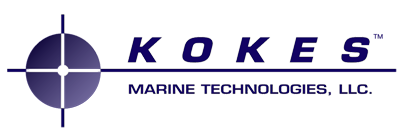Statement prepared by the Honorable Richard L. Rumpf, former Principal Deputy Assistant Secretary of the Navy.
Introduction
An opportunity has recently been identified to engage the services of one or two privately owned diesel/electric submarines for various US Navy purposes and at a very reasonable cost. The first of these submarines, operated by Kokes Marine Technologies, LLC and manned by former-US Navy submarine crewmen, has recently been brought to CONUS and is projected to begin operations sometime later this year for various clients. This boat, as well as the second unit, could be available in the near term for US Navy services such as “ASW On Demand Training”; serving as a “Rabbit” for “Sub on Sub” training; providing a small submarine target for Virginia Class FOT&E; providing a RDT&E platform to develop the technologies required for the LDUUV & XLUUV programs and dramatically reduce development costs, schedule time and risks associated with these programs.
Background
Upon the demise of the Soviet Union, the United States became the operator of the largest fleet of nuclear powered submarines in the world. With the exception of a few allies, most countries that operate submarines have predominately diesel/electric fleets.
The United States Navy had one diesel/electric submarine in service, USS Dolphin AGSS 555. In May of 2002 Dolphin experienced major damage during a flooding/fire catastrophe and underwent extensive repairs. Dolphin was expected to conduct sea trials in June of 2003 followed by several months of certifications. However, the vessel was ultimately scrapped.
NR-1 is was the only other submarine in the US inventory that could achieve the mission performance of the RS submarines. However, NR-1 could not match the speed (8 knots) of the RS boats and was not suitable or cost effective for many routine operations and training scenarios that could be performed by the Kokes boats. The NR-1 was also ultimately retired leaving no small submarines in the US Navy’s inventory.
The 48-foot / 48 ton RS-1 and RS-2 submarines are fully autonomous with a maximum depth of 1,000 and 700 feet respectively. Endurance is 400nm/five days. The submarines employ diesel/electric power plants. The RS-1 includes a closed cycle argon drive system. They can be easily adapted to various mission scenarios and fitted with a breadth of sensors, simulators and/or other optional equipment.
Discussion
Between 1980 and 2015 the number of US Navy fleet of attack submarines has decreased by nearly half. Hence, attack boats, normally used to train Naval air, surface and submarine manned force assets are almost completely restricted due to OPTEMPO demands.
The changing global political climate and focus on potential conflict with rogue third-world nations and terrorist organizations dictates that we more seriously prepare for the possibility of littoral combat that could involve the use of diesel/electric submarines against US Navy forces.
The use of conventionally powered submarines as targets in an Aggressor Roll for submarine, surface and air Anti-Submarine Warfare Training seems the most logical solution. These vessels need not be warships, nor require weaponry as they are training platforms only. The application of a conventionally powered submarine in an aggressor roll affords our war-fighting assets the ability to train against and develop tactics and techniques to defeat those realistic threats.
The RS submarines are ideal platforms for naval and security operations. ASW and prototype system development can be efficiently performed for a fraction of the cost normally allocated to such tasks. The RS submarines have 8000kg of reserve buoyancy and therefore are capable of carrying a myriad of bolt-on or internal ancillary equipment. Hydraulics as well as various voltage supplies and computer interface protocols are available for a broad range of applications.
Summary
Kokes Marine is offering a fully capable and readily available threat representative target service to the US Navy. Their two boats, which can be outfitted with any signature enhancement equipment supplied by the US Navy, will provide an “on demand”, “responsive,” “threat fidelity” target presentation for use in instrumented and non-instrumented ranges.
